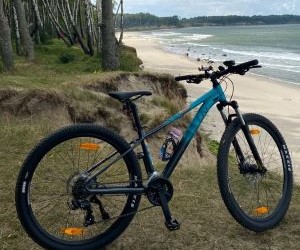Learn how to deal with punctures on long rides with prevention tips, repair techniques, and smart gear choices to keep rolling without stress.
HOW DO I CHOOSE THE RIGHT PEDALS FOR BEGINNERS?
Pedals are one of the most important contact points between a cyclist and their bike, directly influencing power transfer, control, and overall riding confidence. For beginners, choosing the right pedals can feel overwhelming, with options ranging from simple flat platforms to performance-focused clipless systems. The decision depends on your cycling goals, terrain, and comfort with new techniques. This guide breaks down pedal types, their advantages, and practical advice to help beginners make a confident choice.

Understanding pedal types
Pedals come in three main categories: flat, clipless, and hybrid. Each type offers distinct benefits and learning curves, and the best option depends on a rider’s style and goals. Beginners often start with flats for confidence, then progress to clipless once they feel ready to maximize efficiency. Understanding the mechanics of each pedal type provides the foundation for making an informed decision.
The three main pedal categories
Flat pedals are wide platforms that allow easy foot placement and removal. They’re ideal for casual riders, commuters, and mountain bikers learning handling skills. Clipless pedals, despite the confusing name, require cleated cycling shoes that attach to the pedal for secure engagement. They increase pedaling efficiency but take practice to master. Hybrid pedals combine both systems, offering a clipless side for efficiency and a flat side for casual use.
Flat pedals: simple, versatile, beginner-friendly
Clipless pedals: efficient, secure, performance-oriented
Hybrid pedals: flexible for mixed riding styles
By recognizing the pros and cons of each category, beginners can match pedal type to their comfort level and riding ambitions, avoiding frustration while gaining skills progressively.
Factors beginners should consider
Choosing pedals isn’t only about type—it’s about how they fit into your overall cycling experience. Pedals interact with shoes, terrain, and riding goals. A commuter in the city will have different needs than a beginner exploring trails or training for fitness. Beginners should evaluate safety, efficiency, and adaptability before investing.
Comfort, safety, and adaptability
Comfort comes from stable foot placement and compatibility with your shoes. Safety is about how quickly you can put a foot down when needed. Adaptability relates to how your pedals handle different cycling contexts. For example, clipless pedals can feel intimidating at first but offer excellent long-term gains, while flats give instant confidence but may limit efficiency in competitive scenarios.
Shoe compatibility: flat soles vs cleated cycling shoes
Ease of entry/exit: flats are instant, clipless requires practice
Control and stability: wider platforms offer confidence
Learning curve: clipless systems need adaptation time
Budget: flats are affordable, clipless require shoes and cleats
Beginners should also think about where they’ll ride most. Urban riders often prefer flats or hybrids for quick stops, while road cyclists benefit from clipless for efficient long rides. Matching pedal choice with riding environment avoids frustration and maximizes enjoyment.
Practical recommendations for beginners
The right pedals for beginners balance confidence with growth potential. Flat pedals are usually the safest starting point, allowing riders to focus on handling, balance, and road awareness without worrying about clipping in or out. Once comfortable, many beginners transition to hybrid or clipless pedals to unlock performance gains. The key is gradual progression rather than rushing into advanced systems too soon.
Step-by-step approach to pedal choice
Start with flat pedals if you’re brand new to cycling. As your rides get longer and your handling improves, consider hybrids as a bridge to clipless. When you’re ready, opt for entry-level clipless pedals with adjustable tension, making it easier to disengage as you learn. Practicing in a safe, traffic-free area helps build muscle memory and confidence before tackling busier routes.
Step 1: Begin with flats for control and confidence
Step 2: Progress to hybrids for versatility
Step 3: Transition to clipless with beginner-friendly tension settings
Step 4: Practice clipping in/out in safe environments
By following this progression, beginners reduce risks and frustrations while steadily gaining efficiency. Over time, choosing pedals becomes less about “beginner” or “advanced” and more about matching tools to riding goals. With the right mindset and preparation, pedals transform from a source of anxiety into a powerful tool for cycling growth.
YOU MAY ALSO BE INTERESTED






